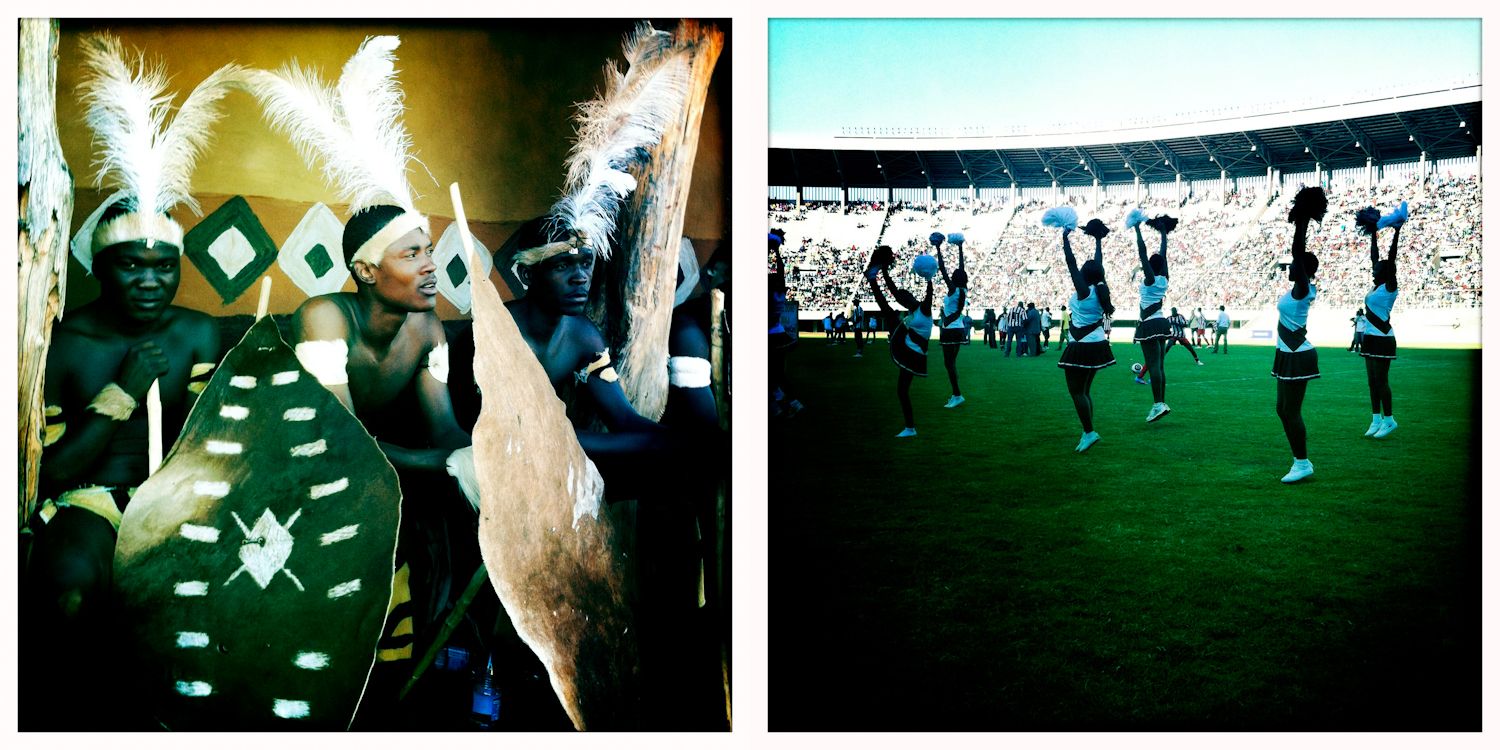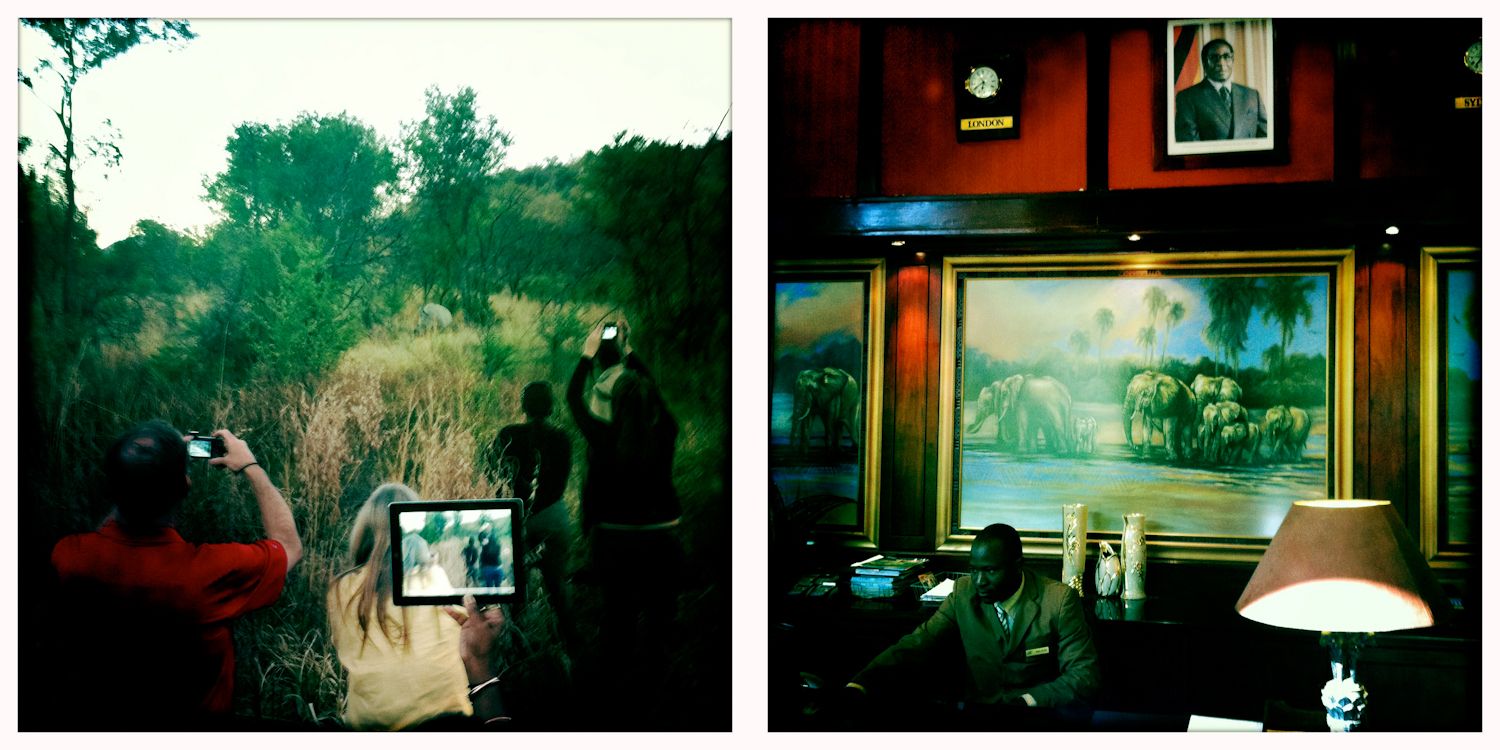Peter DiCampo and Austin Merrill's "Everyday Africa" photography, a project on the mundane that began during a Pulitzer Center-sponsored reporting trip to Ivory Coast, is featured in The New York Times Lens blog.
For decades, international photojournalists have documented a seemingly endless cycle of wars and famine in Africa, exposing otherwise ignored tragedies to a global audience.
But too often the subjects of these images seem to be reduced to symbols, and viewers do not encounter them as fully rounded human beings. And we rarely see journalistic images of the middle class, artists or the cultural heritage of African countries. A complicated continent is often reduced to caricature.
In some ways the most important thing missing from the dramatic news images is the mundane — the moments of everyday life that can often reveal as much as the heightened moment.
As a freelance photographer working in Africa, since 2008 Peter DiCampo has pursued well researched and executed projects on less obvious issues. His “Life Without Lights” on the effects of the shortage of electricity was featured in Lens in 2010.
But even though he was concerned about how Africans were represented in the media, Mr. DiCampo, 28, never quite found a way to provide a complex picture of Africa.
That is, until this year, when he found it by accident after buying an iPhone and taking snapshots while photographing other stories around Africa. He began to notice that his less “serious images” were showing a more complete, more rounded view of Africa than any of his well-planned projects did on their own.
“Whether it’s because of the iPhone or just because I was trying to do different things, it became a very different aesthetic and a very different type of moment that I was capturing — casual observations and mundane activities,” he said.
Together, the individual moments that he observed, and captured, began to show the Africa he experienced on a daily basis. So he started to gather them into a project he called “Everyday Africa.”
“I realized that I had to keep doing it, because there’s a constant barrage of imagery of misery, despair and hopelessness, and more than any of those things — helplessness, the idea that Africans need to be saved,” he said. “There are attempts out there to reverse this and tell empowering, hopeful stories about Africa. This is neither of those. This is an attempt at changing representation of Africa just by sharing things that are casual, that are a general stream of daily life.”
IPhones and Hipstamatic filtration are controversial tools for news photography. But because they are the visual language we use to photograph our own families and friends, they proved to be effective instruments for Mr. DiCampo. The images are less classical and more idiomatic.
While Mr. DiCampo has been working on “Everyday Africa,” he has been relying on a square medium format camera for his editorial work. As that work has become more carefully composed, the iPhone has allowed him to be freer with his everyday Africa images. “Sometimes messy is real,” he said.
Before coming to Africa, Mr. DiCampo studied photojournalism at Boston University and did internships at Newsday and The Telegraph in Nashua, N.H., a couple of newspapers and at the VII Photo Agency.
In 2006, he joined the Peace Corps and by chance was assigned to a village in rural Northern Ghana.
“I did not really even know where Ghana was,” he said. “But I ended up spending two years in a mud hut village being the only foreigner, learning the language, and getting quite close with the community.”
Afterward he moved to Accra, the capital, and based himself there as a freelance photographer. From 2010 to June of this year, he was in the VII mentor program.
So far his iPhone photographs have been made in Uganda and Ivory Coast. He started an “Everyday Africa” Tumblr blog with the writer Austin Merrill, who also covers Africa. The pair collaborated on a project on cocoa farming and conflict aftermath in Ivory Coast for the Pulitzer Center on Crisis Reporting. It turns out that Mr. Merrill is an excellent iPhone photographer (Slides 18 and 19). In addition to iPhone photographs from Nigeria, Zimbabwe and Zambia by Mr. Merrill, the Tumblr has also featured guest photographers. Laura El-Tantawy contributed images from Egypt including some of protesters in Tahrir Square and Shannon Jensen filed from South Sudan. Last week, Holly Pickett posted from Senegal and Glenna Gordon from Uganda.
Eventually Mr. DiCampo wants to have “Everyday Africa” represent every country on the continent. He is asking Instagram users to start using the hashtag #everydayafrica, when they have an image they feel fits the theme. He hope to collect them in a book along with the photos he and his colleagues are putting on the Tumblr.
“I want to have evidence of a shared normalcy,” he said.







